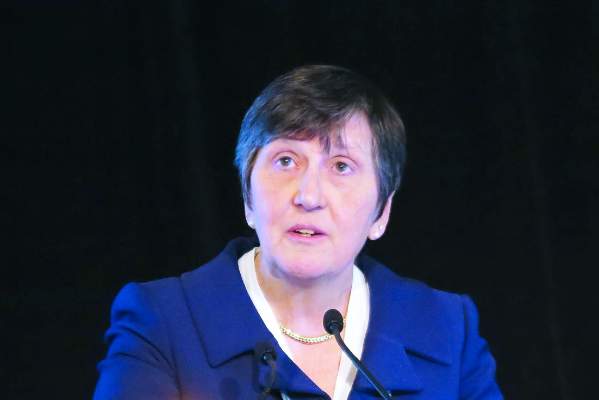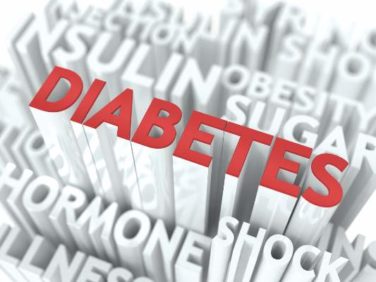REPORTING FROM CROI 2018
BOSTON – Bacterial pneumonia, herpes zoster, and thrombocytopenia in adults of any age could be signs of a possible undiagnosed HIV infection and should trigger HIV testing, investigators in a study of aging veterans contend.
Among adults younger than age 60 years, findings of anemia and/or lymphocytopenia also should trigger HIV testing, said Amy C. Justice, MD , PhD, from the Yale School of Public Health, New Haven, Conn.
“Older people are more likely to present with advanced HIV and specific non-AIDS conditions. Convergence of HIV and aging-associated non-AIDS conditions contributes to delays in diagnosis,” she said at the annual Conference on Retroviruses and Opportunistic Infections.
There are sparse data on how older persons first present with HIV infections, but evidence from a cross-sectional study of 44,491 HIV-infected individuals in the North American AIDS Cohort Collaboration on Research and Design showed that adults aged 50 years and older have lower CD4 cell counts and more advanced HIV disease at the time of presentation.
To get a better sense of HIV infections among older patients, Dr. Justice and her colleagues in VACS (the Veterans Aging Cohort Study) asked if delays in diagnosis persisted, whether non-AIDS conditions differed from conditions seen in HIV uninfected persons of the same age, and whether selected age-associated non-AIDS conditions should be triggers for HIV testing.
They reviewed data on persons diagnosed with HIV from 2010 through 2015 within the Veterans healthcare system. They defined incidence HIV as detectable HIV-1 RNA prior to antiretroviral therapy, and matched infected to uninfected individuals by age, race, sex, site, and year.
They used diagnostic codes within 1 year before or 6 months after HIV diagnosis for data on AIDS-defining illnesses, bacterial pneumonia, and herpes zoster, and laboratory data within 6 months of diagnosis for CD4 counts, HIV-1 RNA, hemoglobin, platelet, and lymphocyte count.
In addition, the investigators drew on the Centers for Disease Control and Prevention HIV Surveillance Report for data on HIV prevalence among different age groups, and chart reviews from the Nathan Smith Clinic at Yale New Haven Hospital for clinical information.
The analysis compared incident HIV by age among the VACS, the Nathan Smith Clinic, and CDC data, and HIV severity by age in the VACS vs. Nathan Smith.
In the VACS, Nathan Smith, and CDC data sets, respectively, the percentages of individuals aged 50 years and older with newly diagnosed HIV were 48%, 24%, and 18%.
An analysis of severity of HIV at diagnosis showed that among individuals aged 60 years and older in the VACS cohort, 20% had an AIDS-defining illness, 43% had CD4 counts below 200/mL, and 49% were diagnosed with AIDS. In the Nathan Smith cohort, 33% had an AIDS-defining illness, 58% had CD counts below 200/mL, and 67% received an AIDS diagnosis.
Looking at non-AIDS–associated conditions, they found that the absolute risk for bacterial pneumonia for HIV-positive patients increased from 6.6% among those aged 40 years and younger to 13.7% for those aged 60 years and older. In contrast, the risk for pneumonia was just 1.2% among HIV-negative controls aged 40 years and younger, and grew only slightly to 2.1% for those aged 60 years and older. The relative risk for pneumonia among HIV-positive vs. negative individuals ranged from 5.3 among those younger than 40 years, to 6.4 among those aged 60 years and and older.
“In all cases, the probability of HIV, given a diagnosis of bacterial pneumonia, exceeds 1%, suggesting that anyone presenting with bacterial pneumonia should reasonably tested for HIV,” Dr. Justice said.
Similarly, the relative risks for herpes zoster for HIV-infected persons ranged from 22.3 in the youngest cohort members to 7.3 among the oldest, and the respective relative risks for thrombocytopenia ranged from 25 to 3.2, suggesting that these findings should trigger HIV testing, Dr. Justice said.
Differences between HIV-infected and uninfected persons with both anemia and lymphocytopenia are more pronounced for younger than for older patients, suggesting that these conditions should trigger HIV testing when they occur in those under age 60, Dr. Justice said.
The study was supported by grants from the National Institutes of Health and Veterans Health Administration. Dr. Justice reported having no disclosures.





